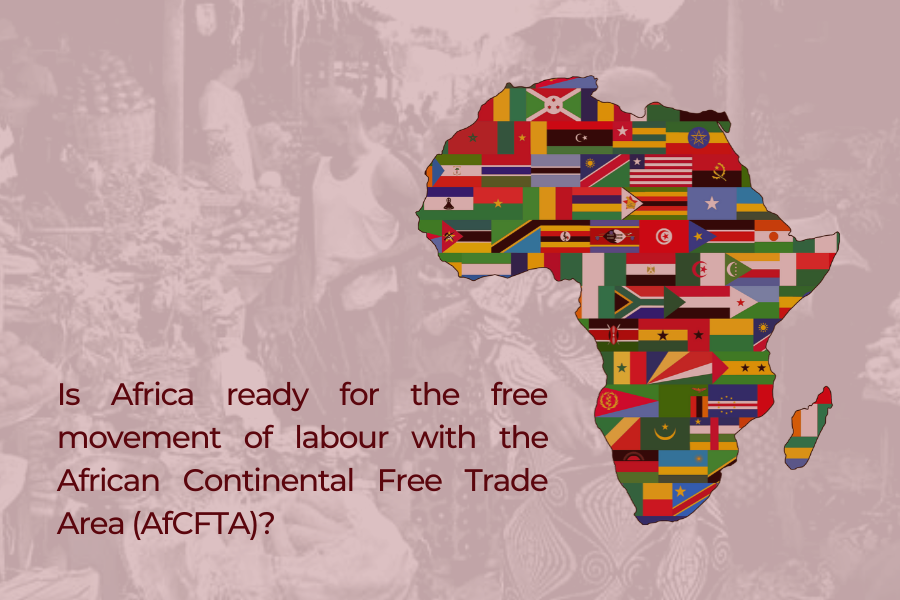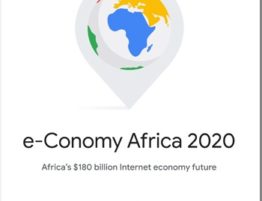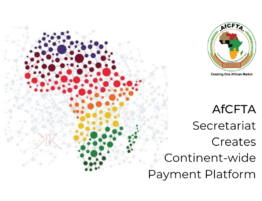
Is Africa ready for free movement of labour with the African Continental Free Trade Area (AfCFTA)?
The Organization of African Unity, now African Union (AU), under Kwame Nkrumah’s leadership conceived an African Common Market programme. Nkrumah envisioned it to be an economic community of African countries pulling their production and trade to a common advantage.
That, to Nkrumah, was the epitome of true independence. The idea of a common African market, however, remained a pipe dream until 2012 when the 18th Ordinary Session of the Assembly of Heads of State and Government of the African Union adopted a decision to establish an African Continental Free Trade Area (AfCFTA) by 2017.
As the AfCFTA awaits full implementation, the status quo remains. For example, four West African nations produce almost 70% of the world’s cocoa – Ivory Coast (42%), Ghana (18%), Nigeria (5%) and Cameroon (4%) – but they just get about 2% of the US$100 billion a year revenue of the chocolate industry. In an attempt to address the problem, on March 28 2018, both Ghana and Ivory Coast signed a treaty to defend their interest in cocoa production, and to a large extent determine cocoa prices on the world market.
Hopes are that the AfCFTA will, as envisioned by founding fathers of the AU, dismantle colonial borders that hinder genuine trade among African countries. But, how does the AfCFTA resolve the challenge of xenophobia, which threatens to restrain the free movement of Africans on the continent?
African Continental Free Trade Area (AfCFTA)
AfCFTA is not just a ‘Free Trade Agreement’ – it is more than that. It is about establishing a unified continental market, including the free movement of labour and investments. The numerous benefits of AfCFTA include, first of all, the essential protocol on the Free Movement of people.
This matters because, at present, traveling between African countries can be very challenging for Africans. Despite the eminent effort of East Africa and West Africa sub-regions that introduced regional passports to aid the movement of people across each regional bloc, there are some obstacles such as visas, expensive air tickets, custom clearances and border controls, which make it difficult to do business across borders.
In addition, African countries are not able to leverage on each other’s extensive human resources. Africa will in the next few decades be the most youthful and populous continent, yet despite shortages of labour in some African countries, trained and skilled Africans find it difficult to work in other African countries.
Where some have moved to neighboring countries in search of employment, it has caused tensions in some countries – a good example is South Africa. This is because uneven development among African countries brings about movement of people resulting in crowding of the developed countries and brain drain in the less developed.
The second most essential benefit of AfCFTA is that all 55 countries on the continent have a collective GDP of US$2.5 trillion, making it the 8th largest economy in the world just behind India. And that also makes the continent much more attractive to investment, both from within and from outside the continent.
That notwithstanding, there are other factors that hinder investment in Africa – such as conflict and political instability, inadequate infrastructure, lack of energy, and more crucially, almost all African countries rely on the extractive industry or export of primary commodities, which do not create large scale employment.
On the other hand, by encouraging the development of AfCFTA, it will hold back these factors that hinder investments on the continent. For instance, the Grand Inga Dam is a proposed hydroelectric dam on the Congo River in the Democratic Republic of Congo. Upon completion, the dam is capable of generating 25 million kilowatts of electricity, capable of electrifying the entire African continent. Moreover, it is estimated to be two times the output of the largest energy-generating body ever built: Three Gorges Dam.
If AfCFTA is fully implemented, the free movement of goods across borders will boost investments on the continent, particularly the Small and Medium Enterprises (SMEs). This will also encourage business people to make investments necessary to sustain economic growth and create the job opportunity the continent badly needs for its people – regardless of nationality.
Finally, the AfCFTA will increase trade between African countries. According to the United Nations Economic Commission for Africa (UNECA), less than one fifth of all exports are currently from one African country to another. Take Kenya for instance, the largest economy in the East African Community, each year the country exports US$1 billion to Europe, and around US$500 million to the US worth of products. Kenya’s total export amounts to US$6 billion in 2017.
But to its neighbour, Ethiopia, Kenya exported just US$69 million in 2017. Why? The main reason is the high level of trade taxes. To address that, the AfCFTA is proposing to remove trade taxes on at least 90% of all trade between African countries to boost regional trade by nearly US$1 billion and to create excessive jobs across the continent.
And AfCFTA is designed to address many countries’ multiple and overlapping memberships in Regional Economic Communities (RECs), complicating integration efforts. Kenya, for example, belongs to five RECs, and this does not help achieve the continental goal of a free trade area and to allow people the movement across the continent all sorts of restrictions.
Movement of labour across the continent
With all these promising features AfCFTA is offering, for it to be successful, Africans must wake up and smell the coffee. For example, the first and second largest economy in Africa are both Nigeria and South Africa respectively. However, last year, we witnessed these two nations at centre of xenophobic attacks.
In recent times in Ghana, retailers from Nigeria are being restrained and attacked by Ghanaian traders for engaging in retail businesses which they insist are violations of the Ghana Investment Promotion Centre Act 2013 (Act 865). This is the biggest challenge that awaits AfCFTA although when it is endorsed as municipal laws and the programme is implemented effectively, it will hopefully remove the bureaucratic and legal hurdles that hinder free movement of people for businesses.
And, potentially, Africans will be able to use their talents where there is a demand for those talents on the continent.
And whereas free movement of people is in principle a good thing, the reality, as the Europeans are fast discovering, is the opposite. Current European political upheavals should act as a warning to Africa. For implementing the idea of ‘free movement of people’ without the accompanying checks and balances, which are designed to minimize inequality, will only lead to political difficulties in the future.
The better solution is, in my opinion, for African governments to first apply their best endeavours to deliver good government; as delivering good government will by implication reduce inequality on the ground, thus levelling the playing field with regard to the equitable division of the national cake.
Only by delivering good governance, the rule of law, and democracy, will it be possible to minimize inequality at home; free movement of people will follow naturally, in the same way liquids find their level when allowed to run freely. In spite of all these, there is a need for genuine embracing of Ubuntu, meaning “I am because we are”. AfCFTA will only be successful if Africans are accommodative of each other as we strive to bring economic prosperity to Africa.
Author: Michael Sumaila Nlasia, a Research Assistant at Centre for Data Processing and Geo-Spatial Analysis.
source: thebftonline.com



